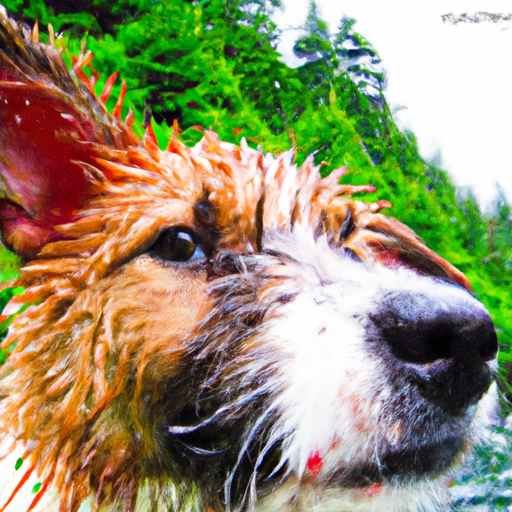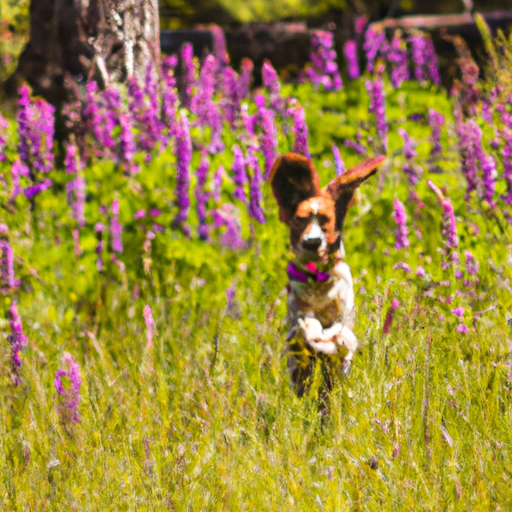So, you've brought home a new furry bundle of joy and you're excited to start training them to be the best behaved pup on the block. But when is the right time to take things up a notch and introduce more complex commands? As a diligent dog owner, it's essential to understand the optimal timing for this next step in your puppy's education. From building a strong foundation to assessing their readiness, this article will guide you through the importance of timing and provide valuable insights on when to introduce those more challenging commands to your adorable little pupil.
1. Importance of Training Commands
1.1 Building a Strong Foundation
Training commands are essential for building a strong foundation with your puppy. By teaching them basic commands, such as sit, stay, and come, you are setting the groundwork for a well-behaved and obedient dog. These commands establish clear boundaries and expectations, helping your puppy understand their role in the family dynamic.
1.2 Enhancing Communication
Training commands also enhance communication between you and your puppy. By teaching them to recognize and respond to specific commands, you are providing a common language that allows for clear and effective communication. This not only helps prevent misunderstandings but also strengthens the bond between you and your furry friend.
1.3 Strengthening the Bond
Training commands can significantly strengthen the bond between you and your puppy. Through positive reinforcement, consistent training, and mutual understanding, you create a relationship based on trust and respect. When your puppy successfully follows commands, it reinforces your role as their leader, creating a deeper connection and fostering a sense of security for your puppy.
2. Basic Commands First
2.1 Establishing Basics
When introducing your puppy to training commands, it is crucial to start with the basics. Focus on commands such as sit, stay, and come, which lay the foundation for further training. These commands teach your puppy core skills and help establish their understanding of obedience.
2.2 Developing Obedience
Basic commands play a significant role in developing obedience in your puppy. By consistently practicing and reinforcing these commands, you are instilling discipline and teaching your puppy to listen and respond, even in potentially distracting situations. Obedience training not only helps ensure your dog's safety but also enhances their overall behavior.
2.3 Promoting Safety
One of the primary reasons for teaching your puppy basic commands is to promote safety. Commands like “sit” and “stay” are essential in preventing your puppy from rushing out the door, approaching strangers or jumping on furniture. Training your puppy to respond to these commands creates a safe environment for both your pet and those around them.
3. Assessing Puppy's Development
3.1 Mental and Physical Growth
Understanding your puppy's mental and physical development is crucial when introducing more complex commands. Puppies grow and mature at different rates, so it's important to assess their readiness. For example, a young puppy may not have the physical coordination or mental capacity to understand complex commands, thus focusing on building a strong foundation before progressing.
3.2 Attention Span and Focus
Assessing your puppy's attention span and focus is another important factor in determining the right time to introduce more complex commands. Puppies have shorter attention spans compared to adult dogs and may struggle with focusing for extended periods. Gradually increasing the duration and complexity of training sessions ensures your puppy can maintain focus and successfully learn new commands.
3.3 Emotional Maturity
Emotional maturity also plays a role in a puppy's ability to learn and respond to complex commands. Puppies go through different stages of emotional development, and it's crucial to consider their emotional well-being when introducing new commands. Avoid overwhelming your puppy with too much too soon, as it can lead to frustration and hinder their progress. Patience and understanding are key when assessing your puppy's emotional readiness.
4. Mastering Basic Commands
4.1 Achieving Consistency
Mastering basic commands requires consistent practice and reinforcement. Ensure that your puppy fully understands and can reliably follow the basic commands before moving on to more complex ones. Consistency in your training approach, tone of voice, and expectations will help solidify the basic commands and create a strong foundation for further training.
4.2 Reinforcing Positive Behaviors
Positive reinforcement is a vital aspect of mastering basic commands. By rewarding your puppy for successfully following commands, you reinforce their good behavior, making it more likely that they will continue to obey in the future. Using treats, praise, and affection as rewards can create a positive association with training and motivate your puppy to strive for success.
4.3 Proofing Commands
Proofing commands is an essential step in mastering basic commands. This involves practicing commands in different environments, with varying levels of distractions. By exposing your puppy to different scenarios and gradually increasing the difficulty, you can ensure that they understand and can perform the commands reliably, regardless of the situation. Proofing commands helps solidify your puppy's training and prepares them for more complex tasks.
5. Gradual Introduction of Complexity
5.1 Adding Intermediate Commands
Once your puppy has mastered the basic commands, you can gradually introduce more intermediate commands. These commands build upon the foundation set by the basics and challenge your puppy's understanding and obedience. Examples of intermediate commands include “leave it,” “drop it,” and “heel.” Introducing these commands gradually ensures that your puppy can handle increased complexity without becoming overwhelmed.
5.2 Introducing Distractions
Introducing distractions during training is an important step in preparing your puppy for real-life situations. Once your puppy has a solid understanding of intermediate commands, start incorporating distractions like other people, noise, or toys. This helps your puppy learn to focus on your commands even in the presence of distractions, strengthening their obedience skills.
5.3 Incorporating Verbal and Visual Cues
As your puppy progresses, start incorporating both verbal and visual cues into your training. This reinforces their understanding of commands and enhances their ability to respond to different signals. For example, pairing the command “sit” with a hand signal can make it easier for your puppy to understand and follow the command, even from a distance.
6. Monitoring Individual Progress
6.1 Watching for Readiness
Continuously monitor your puppy's individual progress to ensure they are ready to advance to more complex commands. Pay attention to their behavior, responsiveness, and overall understanding of the training. If your puppy consistently demonstrates mastery of the current commands and shows enthusiasm for learning, it may be a good indication that they are ready for the next level.
6.2 Recognizing Learning Patterns
Each puppy has their own unique learning patterns, and understanding these patterns can greatly enhance your training approach. Some puppies may learn better through visual cues, while others may respond more to verbal commands. By recognizing your puppy's learning patterns, you can tailor your training sessions to their individual needs, making the learning process more effective and enjoyable.
6.3 Celebrating Milestones
Celebrating milestones is an important aspect of monitoring your puppy's progress. Recognize and reward your puppy's achievements during training to reinforce their positive behavior and keep them motivated. Celebrating milestones helps maintain a positive training atmosphere and encourages your puppy to continue learning and improving.
7. Professional Guidance
7.1 Dog Trainer Consultation
Seeking professional guidance from a dog trainer can be immensely beneficial when introducing more complex commands. A professional trainer can evaluate your puppy's current level of training, provide expert advice, and guide you through the training process to ensure success. They can also address any specific challenges you may be facing and offer customized solutions for your puppy's needs.
7.2 Evaluating Puppy's Readiness
A dog trainer can help evaluate your puppy's readiness for more complex commands. They have the knowledge and experience to assess your puppy's physical and mental development, attention span, and overall capabilities. With their professional expertise, they can determine the appropriate timing and progression for introducing new commands.
7.3 Tailored Training Plans
Professional dog trainers are skilled at developing tailored training plans that suit your puppy's individual temperament, learning style, and specific goals. They can provide structured and personalized training sessions that take into account your puppy's strengths and weaknesses. A tailored training plan ensures that your puppy receives the necessary guidance and support to succeed in mastering more complex commands.
8. Avoiding Overwhelm
8.1 Gradual Progression
To avoid overwhelming your puppy, it is crucial to introduce complex commands gradually. Gradual progression allows your puppy to build upon previously learned skills, ensuring a solid understanding and a higher chance of success. Rushing the training process can lead to frustration and setbacks, whereas a slow and steady approach builds confidence and promotes long-term success.
8.2 Balanced Training Approach
Adopting a balanced training approach is important to avoid overwhelming your puppy. Use a combination of positive reinforcement and appropriate correction to communicate your expectations effectively. Balance praise, rewards, and corrections to create a well-rounded training experience that encourages good behavior while correcting undesirable ones. A balanced training approach fosters a harmonious relationship between you and your puppy.
8.3 Patience and Consistency
Patience and consistency are crucial elements in avoiding overwhelm during the training process. Understand that learning complex commands takes time, and each puppy progresses at their own pace. Be patient with your puppy and provide consistent training sessions to ensure steady progress. Consistency in your commands, rewards, and expectations helps your puppy understand what is expected of them and minimizes confusion or frustration.
9. Considering Individual Temperament
9.1 Active and Energetic Puppies
Active and energetic puppies may exhibit higher energy levels and a greater need for mental and physical stimulation. When introducing complex commands, consider incorporating activities that channel their energy and engage their focus. Incorporating commands into interactive play or incorporating agility exercises can help keep their attention and make the training process more enjoyable.
9.2 Shy or Fearful Puppies
Shy or fearful puppies may require extra patience and support when introducing more complex commands. Sudden changes or increased demands may overwhelm them. Focus on building their confidence gradually and creating a safe and positive training environment. Reward small victories and break down complex commands into smaller, more manageable steps to help them overcome their fears and progress at their own pace.
9.3 Independent and Stubborn Puppies
Independent and stubborn puppies may require additional motivation and persistence during training. Use high-value treats or toys to capture their interest and encourage compliance. Incorporate positive reinforcement techniques that address their independent nature, such as shaping their behavior through rewards and offering choices within the training process. Consistent and firm yet patient training will help them understand the boundaries while preserving their independent spirit.
10. Exploring Advanced Commands
10.1 Strengthening Core Commands
Once your puppy has a solid foundation in basic and intermediate commands, you can focus on strengthening their core skills. This involves refining their understanding and response to the commands they have already learned and increasing their reliability. Strengthening core commands ensures that your puppy has a strong base of obedience to build upon when learning more advanced commands.
10.2 Incorporating Specialized Tasks
Incorporating specialized tasks into your puppy's training can be a fun and rewarding challenge. Advanced commands such as “fetch,” “roll over,” or “play dead” require more complex movements and behaviors. These tasks provide mental stimulation and help build coordination and problem-solving skills. Incorporating specialized tasks into your puppy's training repertoire keeps their training sessions engaging and varied.
10.3 Fun and Challenging Tricks
Training your puppy to perform fun and challenging tricks not only showcases their intelligence but also deepens the bond between you. Tricks like “shake hands,” “spin,” or “jump through a hoop” provide mental and physical stimulation while adding an element of fun to their training. These advanced commands and tricks serve as a testament to your puppy's learning capabilities and can be impressive and entertaining for both you and your pup.
In conclusion, introducing complex commands to your puppy is a gradual and individualized process. Start with building a strong foundation through basic commands, enhance communication and strengthen the bond with your puppy. Assess their development and progress at their own pace, taking into consideration their mental and physical growth, attention span, and emotional maturity. Master the basics before moving on to more complex commands, and gradually introduce distractions and verbal and visual cues. Monitor your puppy's progress, seek professional guidance if needed, and tailor the training plan to their individual temperament. Avoid overwhelm by progressing gradually, using a balanced training approach, and practicing patience and consistency. By considering these factors and exploring advanced commands, you can create a well-trained and happy companion for life.






